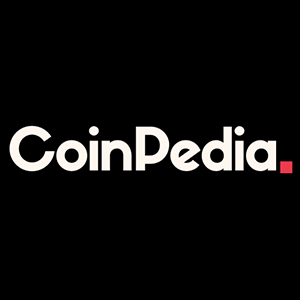

Bitcoin: The Case For Buying Or Holding Ahead Of Halving
Summary Bitcoin’s fourth halving comes at an opportune time amid the recent Spot ETF approvals. Significant gains followed previous Halvings in the price of the world’s biggest cryptocurrency. But having advanced to trade above $50,000, is it too late to buy? Bitcoin (BTC-USD) is scheduled to undergo its fourth halving in April, one of the most anticipated events of 2024 within the crypto space. Halving is a process where Bitcoin mining is cut in half, reducing the number of new bitcoins released to the market. The policy was introduced to ensure BTC remains scarce. Approximately 2 million bitcoins remain to be mined, according to Blockchain Council. As of 2023, approximately 19 million had been mined, with the maximum supply capped at 21 million. Investors have often targeted the period before the next Bitcoin halving to acquire more bitcoins in anticipation of a post-halving rally. Statistically, the Bitcoin price to the US dollar rallied significantly following each of the three previous halvings. In the six months following the first halving in 2012, the BTC/USD price rallied 950%, jumping from $12 to $126. After the second halving in 2016, the price increased to $1,000 from $654 within seven months, while in 2020 it shot up to $18,040 from $8,570 within a similar period. There were more potential catalysts for the price rally in each of the three previous halvings. When the first Bitcoin halving happened in November 2012, it came following the launch of Litecoin in October 2011 and Peercoin in August 2012. The two launches signalled a growing momentum in the adoption of cryptocurrencies, which coupled with the boosted rarity of Bitcoin may have contributed to the sharp spike in the BTC/USD price. In the 2016 halving, Ethereum had just launched the previous year, introducing a new perspective to crypto. Now, developers could build their own apps on the blockchain, further diversifying the use cases of crypto. This was also the time when Initial Coin Offerings ((ICOS)) were gaining popularity, with just about anyone looking to explore opportunities in the industry able to fundraise for their projects with ease. In 2020 halving, the blockchain industry was beginning to immerse itself in the mainstream through decentralised finance, blockchain gaming and non-fungible tokens, all of which may also have boosted the BTC price. We are witnessing a similar turn of events, with the recent Spot Bitcoin ETFs possibly acting as a price boost to the fourth post-halving rally. A Case for Buying Bitcoin Ahead of Halving in April The bitcoin price is up 17.65% this year amid the boost from the SEC’s Spot Bitcoin ETF approvals. This decision by the SEC created a major avenue for traditional investors to invest in Bitcoin without creating a cryptocurrency wallet. One of the biggest barriers to entry into the crypto industry has been the complicated features users must be acquainted with before investing. Although some companies are trying to simplify the process using crypto on-ramps (allowing people to buy crypto using fiat currency), it is still not as smooth sailing as one would experience depositing money into a mobile wallet. Allowing traditional investment banking institutions to offer Spot Bitcoin ETFs allows non-crypto native investors to invest in the world’s most popular cryptocurrency like they would buy shares of any other ETF. This paves the way for more capital to flow into Bitcoin, further raising its demand. According to a report by Barron’s, BlackRock's iShares Bitcoin Trust has already gathered more than $5.2 billion since its debut, while the Fidelity Wise Origin Bitcoin Fund has surpassed $3 billion. These figures only represent two of the 13 Spot Bitcoin ETFs approved in January 2024. But this is not the only catalyst likely to boost the price of Bitcoin in the coming months. I reached out to some experts in the crypto space to find out just how significant the Bitcoin halving and spot ETF approvals could be for the BTC/USD price. Saul (Shauli) Rejwan, the founder and managing partner at Masterkey VC, thinks that the ETF approvals provide a significant step towards regulatory approval and legitimacy for the crypto sector. “Bitcoin ETFs demonstrate that traders and institutional investors are interested in allocating funds to Bitcoin using traditional methods of trading and investment. Demand has exceeded expectations, with over $10 billion shifted into the market in the last month alone,” Rejwan said. Brandon Dallmann, co-founder of blockchain advisory and consultancy firm RoundTable21 also believes that the ETF approvals have broken the final barriers that stood in the way of Bitcoin adoption as a global reserve asset. But more than that, he thinks the halving comes at a time when Bitcoin’s mining network doesn’t have to exploit energy and global power grids. “We are already seeing pioneering power companies deploying mining contracts to improve the efficiency of power grids, reducing wasted energy and harnessing it for economic advantage.” According to Dallmann, when deployed strategically, the bitcoin infrastructure can be “used to tactically expand and strengthen energy providers worldwide, giving the nations that leverage it a strategic computational advantage to those who do not. This opportunity has never been leveraged for any other halving in Bitcoin’s history.” One of the biggest criticisms directed at Bitcoin is the power needed to mine one Bitcoin. In 2021, the New York Times estimated the number to be about 155,000kWhm which is equivalent to more than 14 years of power for the average US household. This fact has prevented some sections of the population, especially those concerned about climate change from investing in Bitcoin. However, with companies finding new ways of utilising Bitcoin mining to optimise the economic value of the power they produce, this could further serve as another catalyst for a BTC price rally after the halving. Recently, the Bitcoin ecosystem has also emerged as one of the fastest-growing blockchains for decentralised applications (dApps), following in the footsteps of popular dApp networks like Ethereum and Solana. The Bitcoin blockchain is now more than just a cryptocurrency, increasing BTC's use cases. This is the first Bitcoin halving to take place after a significant evolution of the Bitcoin network. Technically, the BTC/USD also seems poised to continue the current rally after setting a new 27-month high of $52,265 on Tuesday. Trading View The Bitcoin price has recently completed an upward breakout from an ascending channel formation, indicating an acceleration in the bullish momentum. Furthermore, Bitcoin has now entered overbought conditions in the 14-day RSI, further supporting a bullish bias. The price of the pioneer cryptocurrency also enjoys support off the 100-day moving average line, which triggered the latest spike. The next key resistance zone is positioned around the $60,000 level, which, if broken, could pave the way for a rally taking the BTC/USD to a new all-time high. The $40,000 level, which previously acted as a supply zone, is now emerging as a strong demand zone, which investors could target as a potential zone for buying more bitcoins, should a major pullback occur. A Case for Not Buying Bitcoin Ahead of Halving Although Bitcoin is quickly emerging as a potential reserve currency, crypto still represents a relatively small asset class compared to other popular investment vehicles. “The total traded digital assets are valued at around $2 trillion, compared to derivative markets at over $250 trillion, gold about $10 trillion, and bonds and shares over $100 trillion,” Rejwan said. This makes Bitcoin a relatively riskier asset comparable to those asset classes. Furthermore, the recently launched Spot Bitcoin ETFs may be experiencing a recency bias, which could fade with time, thus limiting their potential impact on the Bitcoin price. While halving has demonstrated in the past three occasions that it can boost the BTC price, things could be different this time around. First, investors are now wiser and would have bought Bitcoin months before the halving. The recent surge in the BTC/USD may support this case, which suggests that the expected post-halving rally, may already be priced in. Secondly, Bitcoin undergoes regular pullbacks after every major rally. Since falling below $20,000 in January 2023, Bitcoin has advanced more than 200%. And since March of the same year, it has not pulled back by more than 15% without bouncing back. Therefore, the BTC/USD could still experience a major squeeze of about 23%, which could see it retest the $40,000 level, which now represents a key demand zone. Conclusion Overall, there are multiple catalysts for a continued BTC bull run. The opportunity created by the approval of the Spot Bitcoin ETFs coupled with the emergence of the Bitcoin network as a dApp ecosystem makes Bitcoin a more interesting cryptocurrency ahead of its fourth halving. Technical analysis also supports a continuation of the current gains, with a $60,000 level potentially providing the signal of how far this rally could go.













